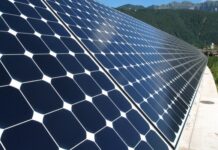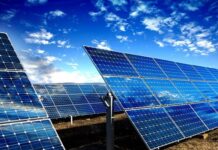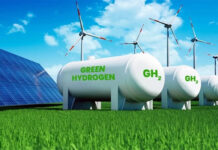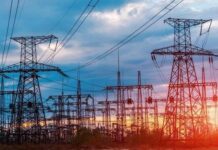In order to achieve the goal of the Paris Agreement to limit global warming to 1.5°C, the world must increase its renewable power capacity threefold by 2030. The IEA summarizes its report COP28 Tripling Renewable Capacity Pledge: Tracking countries’ ambitions and identifying policies to bridge the gap. This report examines nearly 150 Nationally Determined Contributions- NDCs outlining each country’s plans and assesses the actual progress, which in many cases exceeds the stated plans. Although the world is projected to reach nearly 8,000 GW of installed renewable capacity globally by 2030, it falls short of the required 11,000 GW. The report goes on to break down ambitions and executions across nations and regions. Almost 30 countries aim to increase their renewable capacity by two to three times by 2030, accounting for almost three-quarters of global ambition, with China, the United States, India, Germany, and Spain leading this effort. The IEA provides detailed recommendations for achieving the target, including streamlining permitting, accelerating the integration of variable renewables, and reducing financing costs to improve the bankability of projects.
Strengthened NDCs can establish a clear path to tripling global renewable capacity. At the COP28 climate summit in Dubai, nearly 200 countries collectively pledged to major energy targets to support the Paris Agreement goal of limiting global warming to 1.5°C. Governments set global goals for 2030 for the first time, including tripling renewable power capacity, doubling energy efficiency improvements, substantially reducing methane emissions, and expediting the transition away from fossil fuels in a fair and orderly manner.
Attention is now focused on implementation, particularly as countries prepare updated Nationally Determined Contributions- NDCs under the Paris Agreement. Next year, countries are expected to submit new NDCs, presenting an important opportunity for them to clearly commit to or raise their ambitions to fully implement the global pledges made at COP28.
This is a critical time for countries to evaluate their renewable energy ambitions and update their NDCs to align with the goal of tripling capacity. Recent IEA analysis indicates that achieving the goal of tripling global renewable power capacity by 2030 is an ambitious yet attainable objective, given the sector’s record-breaking annual deployment, significant momentum, and increasing competitiveness with fossil fuels, particularly for solar PV and wind. This report aims to outline what is still required to achieve this objective. Covering almost 150 countries, the report seeks to answer four main questions:
- How do existing government commitments in NDCs reflect renewable power capacity?
- Are countries on track to achieve these commitments?
- How do these commitments measure against the COP28 pledge to triple global capacity by 2030?
- What are the relevant policy priorities so as to address gaps in both implementation and ambition?
Only a few countries explicitly outline renewable capacity targets in their current NDCs. From the 194 Nationally Determined Contributions that happened to be previously submitted, there are only 14 that include specific targets for the total renewable power capacity for 2030. The total renewable capacity ambitions by 2030 across NDCs amount to over 1,300 gigawatts (GW), which is just 12% of the global tripling pledge requiring installed renewable capacity of at least 11,000 GW by 2030.
China’s target of 1,200 GW of solar PV and wind capacity this decade represents over 90% of all renewable capacity mentioned in NDCs. Nonetheless, many governments view renewables as crucial for mitigating emissions, with 95% of NDCs- 184 overall containing references to “renewable” energy or individual renewable energy technologies, and 93 including a quantitative value when it comes to their renewable energy ambitions for 2030.
Government ambitions and plans for renewables significantly exceed what is outlined in existing NDCs. Countries’ overall aspirations for renewable power capacity correspond to reaching almost 8,000 GW globally in 2030, based on an analysis of existing policies, plans, and estimates for almost 150 countries. These countries collectively represent almost all global emissions from power generation and the production of heat. According to the detailed policy stocktake, half of the global ambition can be explicitly tracked in national policy documents, plans, and multilateral commitments for over 90 countries. Values for another 48 countries with other renewable energy ambitions were also estimated, from which total capacity could be easily derived. China happens to account for almost half of this expected total.
Solar PV and wind energy dominate countries’ ambitions, while hydropower, bioenergy, and other renewables tend to be overlooked. If countries meet their 2030 ambitions, the installed capacity of solar PV would surpass hydropower, which was the world’s largest source of installed renewable capacity in 2022.
Levels of ambition vary significantly among countries at present. About half of the countries studied plan to more than double their total installed renewable power capacity by 2030, with some aiming for even faster progress. If all these ambitions are realized, the global installed renewable capacity will be 2.2 times the 2022 level by 2030. Almost 30 countries have set their sights on increasing their renewable capacity by two to three times by 2030, representing nearly three-quarters of the global ambition, led by China, the United States, India, Germany, and Spain.
The magnitude and pace of China’s renewable capacity expansion will be crucial for the overall global deployment speed through 2030. Although China has not yet announced a specific 2030 target for total renewable capacity, it is anticipated to exceed its 2030 goal of 1,200 GW for solar PV and wind this year. Projections by the IEA, considering the latest deployment trends, suggest that China’s capacity in 2030 is expected to be 2.5 times its 2022 level.
Current policies and plans in advanced economies indicate an almost twofold increase in their renewable capacity by 2030, accounting for nearly 40% of global ambition. This is primarily driven by European countries, contributing a fifth of the global total. Member states of the European Union represent over 80% of the region’s contribution, largely based on their draft national energy and climate plans (NECPs). Together, the United States and Canada aspire to install nearly 1,000 GW of renewable capacity by 2030, equivalent to 13% of global ambition.
Emerging and developing economies, excluding China, also currently intend to double their capacity, led by substantial ambition from India. In Latin America, where renewables already make up more than 60% of the region’s electricity generation due to the longstanding use of hydropower, the combined aspirations of the countries correspond to 1.3 times the installed capacity in 2030. Brazil alone accounts for over half of the region’s total ambition. Sub-Saharan Africa and Eurasia aim for installed renewable capacity of 3.2- and 1.3-times today’s levels, respectively. The Middle East and North Africa region exhibits the highest growth factor based on its aspirations – 4.5 times its current small base, led by Saudi Arabia, Egypt, and Algeria.
Most countries need to expedite implementation to achieve their current ambitions. The worldwide renewable capacity additions reached around 560 GW in 2023, which is indeed a remarkable 64% year-over-year increase from 2022. This aligns with the annual pace required to achieve nearly 8,000 GW of installed capacity by 2030, matching the current policies, plans, and estimates of countries. Nearly 50 countries are on track to meet or exceed their current plans, with China being the largest contributor by far. In 2023, China added almost 350 GW of new renewable capacity, more than half of the global total. If it maintains this pace, it could significantly surpass its existing 2030 ambitions. However, outside of China, the rest of the world would need to accelerate average annual growth by 36% over the rest of the decade to reach national ambitions.
To meet national ambitions and spread progress more broadly, deployment needs to accelerate in most regions and major countries, including the European Union, the United States, and India. Substantial scaling up of deployment is also required in Southeast Asia, the Middle East and North Africa, and Sub-Saharan Africa.
The cumulative ambitions of countries are currently not in line with the goal of tripling renewable capacity this decade. Even if all countries fully implement their current ambitions, the world would fall short by 30% of tripling global renewable capacity to over 11,000 GW by 2030. The current ambitions of advanced economies and of emerging and developing economies do not align with the COP28 pledge to triple global renewable power capacity by 2030, which is crucial for getting on track for the IEA’s pathway to achieving net zero emissions by mid-century and limiting warming to 1.5 °C. The level of ambition when it comes to advanced economies needs to elevate from a growth factor of 1.9 to 2.5, whereas when it comes to emerging and developing economies, the growth factor has to rise from 2.4 to 3.4.
Countries need to implement supportive policies to bridge gaps in both ambition and implementation. The increasing cost competitiveness of renewables compared with fossil fuels underscores the significant role that policies can play in accelerating deployment. Ever since the signing of the Paris Agreement in 2015, the worldwide renewable capacity additions have tripled, majorly because of the policy support across 140 countries, economies of scale, and technological progress. These factors have contributed to an over 40% reduction in the cost of wind and solar PV. Well-designed policies that address current challenges for renewables can further accelerate deployment, bridging the persistent implementation gaps and encouraging countries to continue increasing their ambitions in the years to come. While all countries will develop their own policy paths, it is clear that supportive policies remain essential for the continued growth of renewable energy.





































